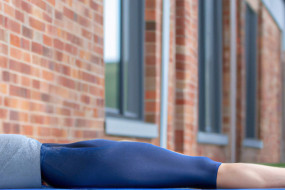
Running shoes are the most important investment you'll make when it comes to your running performance. With so many options available, it can be difficult to know which pair is right for you. Follow these ten tips to ensure you choose the perfect pair of running shoes that meet your needs and surpass your expectations.
1. Know Your Foot Type
Before purchasing your running shoes, it's important to know your foot type, as this will affect how you run and what kind of shoe will work best for you. The three basic foot types are flat feet, high arches, and normal arches. You can easily determine your foot type by taking a wet footprint and observing the arch. Knowing your foot type will make it easier to narrow down the options to shoes that work for you.
2. Determine Your Running Style
Different types of runners benefit from different types of running shoes. Are you a sprinter, distance runner, trail runner, or something in between? Each type of runner has different requirements.
3. Look for the Right Features
Running shoes come with a plethora of features. Some features are helpful while others may not be necessary for you. Cushioning, stability, and motion control are just a few of the features you should be looking for in a running shoe.
4. Consider Your Environment
The terrain and conditions in which you run should also be taken into account when selecting running shoes. Trail runners should have sturdy, more durable shoes with a strong grip, while road runners need shoes with a lot of cushioning.
5. Get a Proper Fit
A proper fit is essential to avoid issues like blisters or cramps. Be sure to try the shoes on with the socks you plan on running in, as thinner socks may make the shoes fit differently. Walk around in them in the store, and consider getting a professional fitting.
6. Consider Your Budget
Running shoes can be expensive, but it's important to invest in a good pair that will last. Determine a budget before you start shopping, but also keep in mind that investing in a high-quality running shoe will pay off in the long run.
7. Look for Reviews
Before making a purchase, check out online reviews from other runners and fitness professionals to gauge how the shoe performs in real-world conditions.
8. Break Them in Gradually
New running shoes will need to be broken in gradually to prevent injury, as they will have different support and cushioning than your previous shoes. Start with shorter runs and gradually increase intensity and duration over time.
9. Replace Them Regularly
Running shoes take a lot of abuse and need to be replaced regularly to ensure they continue to provide the support and cushioning your feet need. Generally, shoes should be replaced every 300-500 miles.
10. Trust Your Instincts
Ultimately, the best way to choose the perfect pair of running shoes is to trust your instincts. If a pair feels uncomfortable or unsupportive, keep looking. Your feet will thank you for it.
















